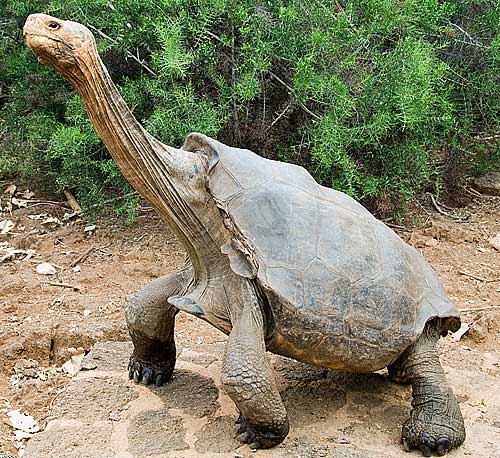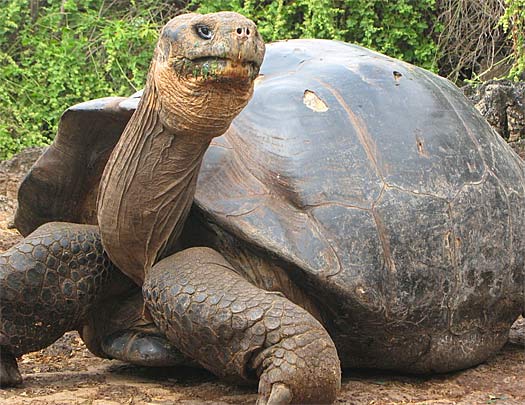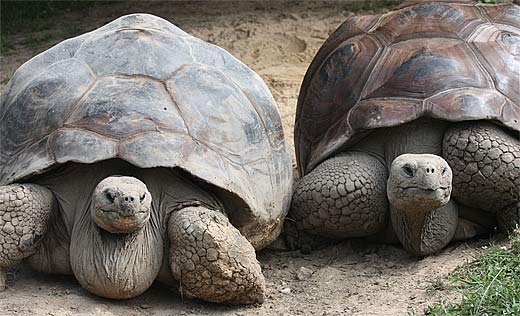Galapagos Tortoise – The World’s Largest Tortoise

Galapagos Tortoise – Saddle-back subspecies
The Galapagos Tortoise is a giant tortoise, the world’s largest tortoise or land turtle (see turtle or tortoise?), that lives on the Galapagos Islands. These are big guys with a big name. The name of the islands actually comes from the tortoises – Galapagos means saddle-back in Spanish, which is a description of the tortoise’s big shell. These are the islands of course where Charles Darwin partly developed the theory of evolution, certainly with the help and collaboration of the gentle giants. There are quite a few subspecies of the tortoise, one in particular is called the saddle-back and its shell has some ridges on top that make it look even more like a saddle than some of the others. This subspecies has the longest neck of all the species as well.

The Galapagos Tortoise can weigh up to seven hundred pounds (320 kg). They are vegetarians and eat primarily grasses, fallen fruits from trees and other vegetation. They live for a really long time – more than 150 years in some cases! Their longevity is definitely lifestyle related. They do not have many natural predators once they pass the egg stage and make it through the first year. Their diet is healthy and they kind of just hang out in the sun for a big part of the day and graze. They hit the hay around four or five in the afternoon and sleep in a muddy hole if they can find one to keep them cool. They can go for long periods of time without food or water. Life is pretty simple for them. It wasn’t always so; they were hunted for their meat and their shells in days gone by, so life use to be a lot more dangerous for them. On some islands, due to human factors, particular subspecies have been in danger of disappearing and two subspecies no longer exist.
The Galapagos Tortoise has an unusual mating ritual. The male tortoise will bite the female on her legs until she finally gives in and pulls her legs into her shell allowing the male access for mating. They often let out a hoarse grunting noise to attract females and will always concede to a larger male during mating. Mating can last for several hours. Seven hundred pounds cannot be easy to mate with. The female will travel up to several miles to lay her eggs, and will lay anywhere between two and sixteen eggs. They are not very attentive parents and allow the babies to take off as soon as they are out of the eggs never seeing them again unless by chance. The Galapagos Tortoise does not reach sexual maturity until they are around age forty. They are peaceable creatures and allow the finches that they share their habitat with to eat the ticks off their neck, by extending their necks so the birds can land on them and pick the ticks off.
The galapagos tortoise is a slow-moving, slow-growing, peace-loving member of the Galapagos National Park, and they are better known than any other creature living on the island, making them good ambassadors for conservation efforts.

